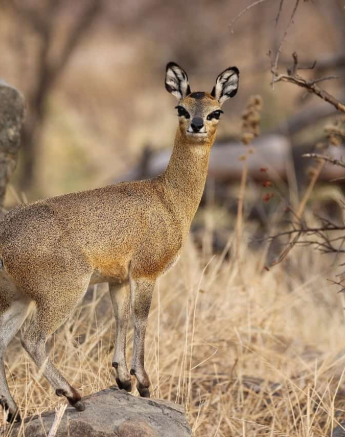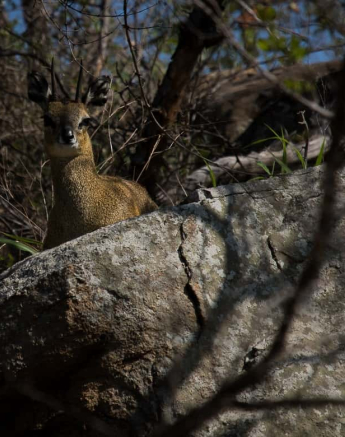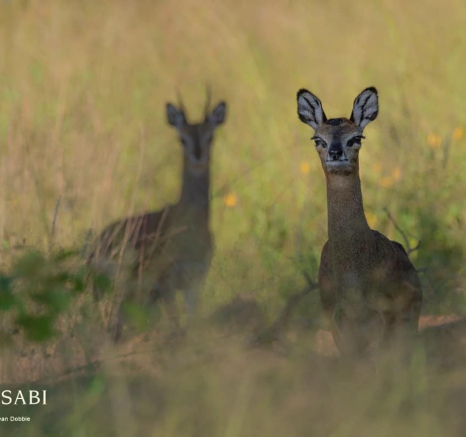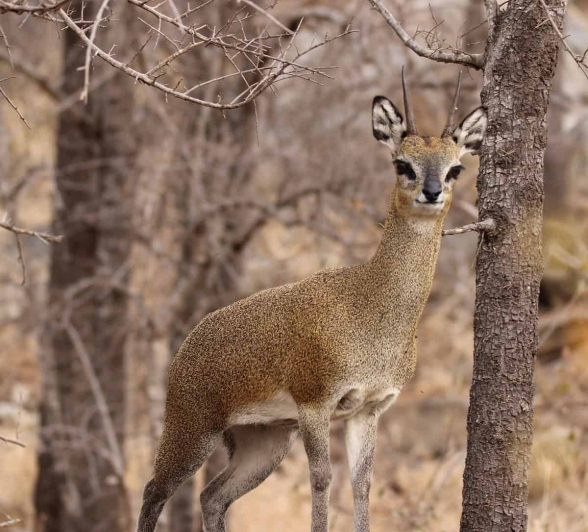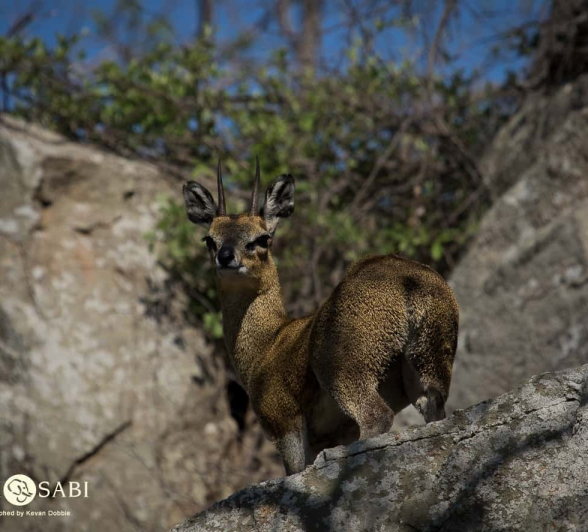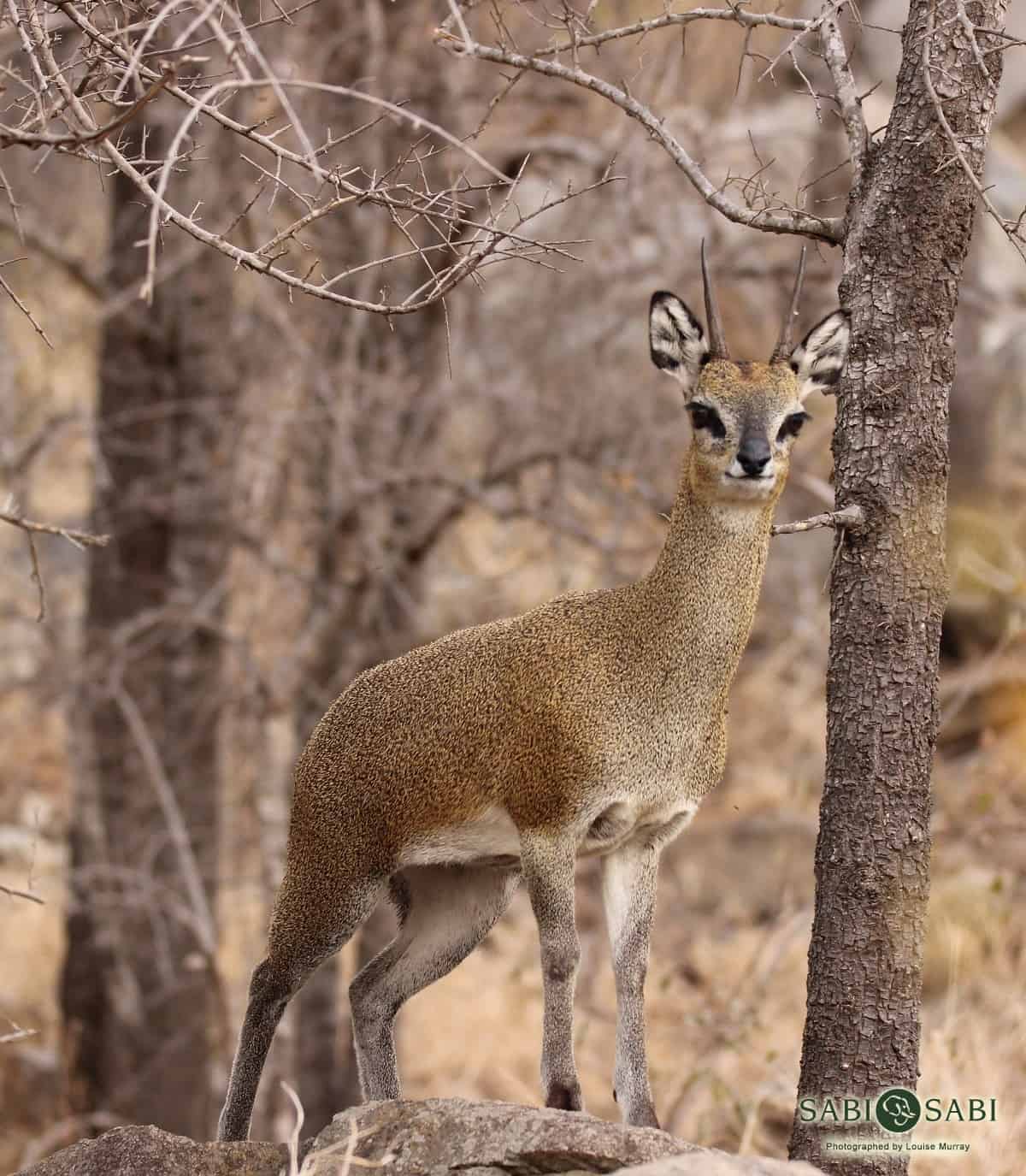Klipspringer
on Apr 12, 2019Species name: Klipspringer
Scientific Name: Oreotragus oreotragus
Weight: Male: 8-11 kg - Female: 12-14 kg
Shoulder Height: Male: 49-52 cm - Female: 50-54 cm
General Habitat: Rocky outcrops, cliff faces and surrounding areas, from sea level to mountainous areas.
Diet: Predominantly browsers but will occasionally consume grass and small forbs.
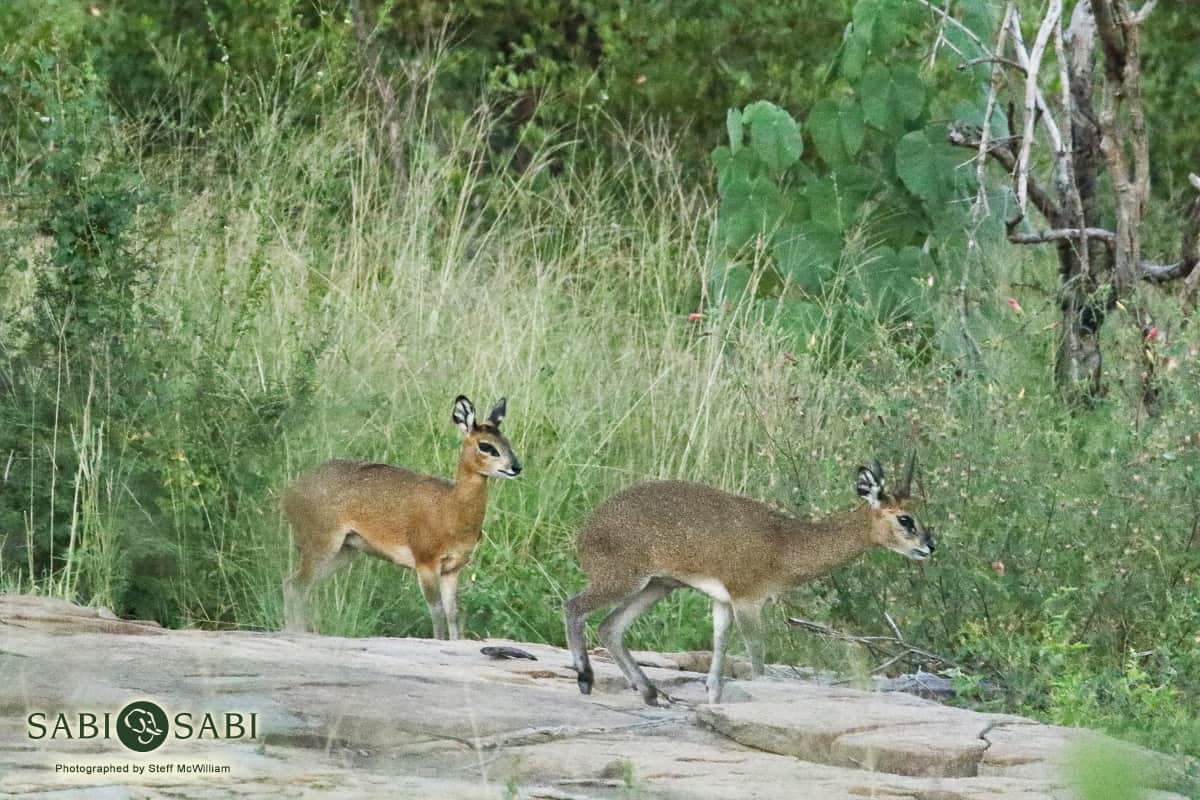
The Klipspringer is a very small antelope that gets its name from both the habitat in which it is commonly found and from its incredible adaptions to living on rocky outcrops. An Afrikaans word, Klipspringer, directly translates to “Rock-jumper” with the word “klip” meaning rock and “spring” meaning jump.
These incredible creatures are fairly rare to see and are often mistaken for baby antelope due to their small size. They are one of the few antelopes that are monogamous, forming lifelong bonded pairs. They are not often too far apart from each other and will actively defend territories of 8-49 hectares. Both male and females have scent glands in front of their eyes which are called pre-orbital glands. These glands secrete a tarry secretion which they will use to demarcate their territories, often marking over one another to enforce their bond with each other. In addition to this, they also make use of latrines or communal dung middens that are shared among the family group. These unique antelopes are spectacularly adapted to their environment with specially adapted hooves that grip smooth rocky surfaces as they jump from one rock to another. They are also the only antelope to walk on their hoof tips, creating very unusual tracks when on sandy ground.
It is only the male that has a small set of horns although both sexes are covered in a coat of thick, bristly hairs that are hollow as an adaption to help with thermoregulation and possibly help cushion any falls. In the past, their hair was used to stuff pillows or saddles with because of these features. Klipspringer populations are widely distributed and fairly fragmented which has given rise to four different sub-species, The Zambian, Cape, Transvaal and Angolan. Klipspringers do not often fall prey to predators as they are extremely agile and fast and are quick to alert others to the presence of predators with nasal alarm whistles. They do however have a large variety of predators from various raptors, to rock pythons and leopards.
Klipspringers are non-seasonal breeders, but evidence suggests that breeding may peak in the rainy summer months. The will usually give birth to just one lamb after a gestation period of about 220 days. Weighing in at a mere 1 kg, the lamb will remain hidden for the first 1-3 months. Wild individuals have a lifespan of just 6-8 years, but captive individuals have been known to live to over 17 years. When on safari, keep a lookout around rocky, mountainous areas as you just might be lucky enough to spot one of these lesser-known antelopes.
My Memorable Sighting
Many months ago, we were following a leopardess though an area of rocky terrain when our attention was drawn to a loud whistle up on the rocks. A darting movement caught our eyes as a tiny creature leapt from rock to rock in an astounding display of agility and speed. The Klipspringer had alerted its partner to the presence of the female leopard and both continued to alarm call from the rocky crest as they pranced about in an impressive display. Needless to say, the leopardess glanced up at them longingly but proceeded on in defeat as she knew she would be no match for these little rock jumpers.
Photo Content
